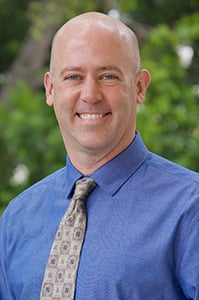You have /5 articles left.
Sign up for a free account or log in.
Cape Cod Community College has little in common with Johns Hopkins University.
The small public institution in New England has an open admissions policy, while Hopkins is a renowned private institution that accepted just 8.4 percent of 27,091 applicants for fall 2019. It receives more federal funding for research than any other university in the nation.
The community college, located in West Barnstable, Mass., has an endowment of $9.8 million. The university in Baltimore has a $4.3 billion endowment.
The two institutions are worlds apart in almost every respect -- except one. Each received a head-turning donation in recent months from individual, longtime benefactors who want to expand access to higher education and economic opportunity.
The $1.8 billion donation to Hopkins in November by well-known philanthropist Michael Bloomberg made national headlines and was widely celebrated for its generosity and potential long-term impact, even as some critics suggested the money would have been better spent at institutions that weren't already rich. The $5 million donated last month to Cape Cod by a less familiar multimillionaire named Maureen Wilkens received only modest news coverage in the Boston area, but it was no less noteworthy. While both gifts were the largest single donation by an individual in each institution’s history, the $5 million was among the largest individual gifts to a community college in the nation.
Although the $1.8 billion gift represents a whopping 41 percent of Hopkins’s total endowment, the $5 million donation from the elderly widow of a former investment manager is equal to 51 percent of Cape Cod’s endowment.
The median family income of a Cape Cod student is $65,000; 22 percent come from households whose incomes are in the top 20 percent and 14 percent come from families in the bottom 20 percent, according to the Equality of Opportunity Project. The median family income of a student at Johns Hopkins is $177,300; 72 percent come from the top 20 percent and 2.9 percent from the bottom 20 percent, according to the report. About 2.2 percent of students at Johns Hopkins came from a poor family but became a rich adult. At Cape Cod, about 44 percent of students are eligible for Pell Grants.
Large donations by wealthy alumni to prestigious higher ed institutions are not unusual. Large gifts to small community colleges without national reputations are very unusual.
 “It’s not the largest gift in the country to a community college, but it is significant and certainly rare,” said Geoff Green (right), chief executive officer of the Santa Barbara City College Foundation and a board member of the Network of California Community College Foundations. “In any given year, you might get a dozen gifts in that general range.”
“It’s not the largest gift in the country to a community college, but it is significant and certainly rare,” said Geoff Green (right), chief executive officer of the Santa Barbara City College Foundation and a board member of the Network of California Community College Foundations. “In any given year, you might get a dozen gifts in that general range.”
Santa Barbara, or SBCC, was among the community colleges that received big gifts last year. A donor gave the college $6.2 million. Ventura College, also in California, received $12 million, which was reportedly the largest gift ever to a community college in Southern California and surpassed the record $10.1 million given to Los Angeles City College in 2016.
The $5 million donated to Cape Cod, or 4Cs, as the college is locally known, will go toward construction of a new science and engineering building on campus.
“The college is so important to our community,” Wilkens, the donor, said in a written statement prepared by the college. “It provides outstanding higher education opportunities for our neighbors on the Cape and Islands and beyond. A new science building has been needed for a very long time.”
In an era of mega-gifts by billionaires to higher ed institutions, a $5 million gift would amount to little more than a rounding error on Bloomberg’s $1.8 billion donation. But seven-figure gifts to community colleges are hugely consequential, especially at a time of declining enrollment and dwindling state and federal funding.
Cape Cod’s enrollment fell from a high of 4,452 in fall 2008 to just 2,840 students in fall 2018, the kind of decline common at community colleges in areas where the population is not growing. The majority of students are women (68 percent) age 20 through 34. State appropriations to the college increased by only $1 million in the past decade. The college does not receive any funding from the local county government.
“Absolutely, this is a transformational gift,” said John L. Cox, president of the college. “It is extremely meaningful. Mrs. Wilkens could have given this gift to anyone, to the Harvards of the world, but it would have gotten lost in the mix of a $39 billion endowment.”
Instead, the $5 million “will be a driver in transforming the institution and even our role in the region,” Cox said. “It will change the trajectory of this institution and the community and what we can ultimately build out for future students.”
Wilkens declined, through the university, to be interviewed. According to the written statement released by the college, she made the donation as an impetus for others to contribute toward the construction of the new building.
The new building is expected to cost $38 million and will be partially funded by a $25 million state bond. The college is contributing $3 million toward construction costs, and its fund-raising foundation is leading a $10 million capital campaign to raise the rest.
Wilkens’s donation was not her first gift to the college, but it was her largest. She and her late husband, Frank Wilkens, a former pensions funds manager with his own firm, established the Wilkens Family Trust Scholarship in 2007 to help single parents attending the college. It annually awards 10 students $4,000 apiece.
Kathy McNamara, CEO of the Cape Cod Community College Educational Foundation, said Wilkens, who lives on Cape Cod, was inspired to create the annual scholarship by a former housekeeper, a single mother who Wilkens could see was smart and ambitious. Wilkens understood that a scholarship could change the lives of similarly situated people, McNamara said.
“It was a real epiphany about how important that CCCC is to the local economy and how it gives so many people a pathway to success,” she said. “There’s a lot of need here.”
Cox noted that community colleges in New England are among the most expensive in the country. Annual tuition and fees at CCCC total $6,330, or $211 per credit, for full-time students taking 30 credits per year. The national average is $140 per credit, according to the American Association of Community Colleges.
“We’re the most affordable in the state,” Cox said, “but nationwide we’re more expensive than most.”
The Wilkenses have given the college nearly $11 million in total. Bloomberg, a former New York City mayor and Johns Hopkins alumnus, is inarguably in a class by himself. He has given Hopkins a total of $3.3 billion over the years, including his latest gift, which will likely influence the lives of countless generations of young people. Wilkens’s recent gift stands out because neither she nor her late husband attended CCCC. (Maureen Wilkens is 1956 graduate of Emmanuel College in Boston, where she has also made major donations. A science center building on campus is named for her, as is an atrium in the student center building.)
Institutional development professionals say the size and pace of donations to community colleges are starting to increase, but the shift is occurring slowly and not nearly as methodically or efficiently as the money raised by four-year colleges.
Community colleges are still relatively new to fund-raising, and as they increasingly face budget deficits, steep state funding cuts and shrinking student rolls, their presidents are recognizing the potential of rich donors as untapped sources of financial support and stepping up their institutions’ fund-raising capacity.
“The Ivies figured this out 100 years ago,” Green, of Santa Barbara City College Foundation, said of Ivy League institutions. “The big four-year colleges developed their fund-raising in the last 20 to 30 years. For community colleges, it’s more like last Tuesday. That’s really what it feels likes. Many of them either don’t have fund-raising foundations or they have them at a shell level where they’re not really professionally staffed, fully self-functioning, philanthropic organizations.”
Green, who is also a member of the Council for Advancement and Support of Education’s National Committee for Institutionally Related Foundations, said community college leaders aren’t always aware of the important role of foundations in helping raise the profile of an institution in the eyes of potential donors, or in establishing or nurturing existing relationships with them.
“That’s because it’s often just not in the DNA of the institution,” he said.
Not so CCCC. It established its foundation in 1983, and successive administrators have made sure to nurture the college’s relationship with the Wilkenses.
Cox was the incoming president of the college when he was introduced to Maureen Wilkens in the summer of 2012 by the outgoing president.
“I learned that her husband had passed away and that they were a team in deciding what to support,” he said.
He also learned about their motivation for giving.
“She said, ‘We’re here, we’re committed to the community and we want to help our community continue to thrive,’” Cox recalled. “Social awareness was a driver in their charitable giving.”
Cox researched the relationship between private giving and state funding for his prize-winning doctoral dissertation at George Washington University and found that donors are not influenced by state funding decisions; they give, as Maureen Wilkens did, simply because they want to.
“In a way, it’s a certain recognition by someone who lives in the community of the need to be committed to the teaching and learning of others around us,” he said.
Although CCCC’s foundation is 35 years old, Green said the average community college foundation is about 20 years old. Santa Barbara’s foundation has been in existence for 42 years.
“The college was founded in 1909; we were one of the original community colleges in the country,” he said. “Our foundation was not started until 1976, a full 67 years later. And we were one of the earlier community college foundations.”
As a result, Santa Barbara has a relatively sizable $60 million endowment.
“In the community college world, that number is considered a real monster,” Green said. “But if you lay it next to the endowment of a four-year institution, even the less prestigious ones, it’s not really all that high.”
If the Wilkenses’ history with CCCC is any indication, they were less interested in helping grow the college’s endowment than in providing support for capital improvement initiatives -- such as the renovations of a nursing program lab and a dental clinic and other construction projects on campus -- that serve the academic needs of students and prepare them for jobs in the local labor market.
“The college is a hidden gem and offers local students an excellent and affordable education. Faculty will be able to provide the best possible science education, supported by a modern, state-of-the-art facility,” Maureen Wilkens said in the written statement about her gift. “The faculty and students deserve this, and our local economy will benefit from it with a well-educated workforce.”
One might expect the 1,132 community colleges in the U.S. to be more regular recipients of such largess given that they educate 49.2 percent of the nation’s college students. Instead, these institutions are routinely overlooked by philanthropists interested in higher education.
Just last December, Ron Perlman, a billionaire banker and businessman, announced that he was giving Princeton University $65 million. He and his family members have also given millions of dollars to the University of Pennsylvania.
Colleges and universities have raised unprecedented amounts of money in recent years -- $43.6 billion in 2017 alone -- but just 1.5 percent of the dollars raised go to two-year institutions, according to the Council for Aid to Education.
To date, there has not been a single nine-figure donation to a community college. Green said this is partly due to how community colleges are viewed by image-conscious donors looking to put their personal stamp on an institution.
“There’s a sexiness factor to a high-profile research institution, whereas a local or regional college doesn’t offer that high-profile recognition for the donor,” he said.
He said community colleges are routinely disadvantaged by this lack of prestige, even though “A $100,000 gift is enough to get your name on a building at a community college.”
The Wilkens name is ubiquitous at CCCC. There’s the Wilkens Library and the Wilkens Family Dental Hygiene Clinic, which is located in Maureen M. Wilkens Hall. A nursing clinic that was renovated and expanded in 2017 will soon be renamed in honor of Frank Wilkens. And Cox is seeking approval from the state Board of Higher Education to name the new science and technology building for both Frank and Maureen Wilkens.
Community college fund-raisers are optimistic that more philanthropists will follow the Wilkenses’ lead as the colleges get more conspicuous gifts. They say as mega-gifts by mega-millionaires and billionaires have become the norm, some donors are worried about their money being squandered by big, bureaucratic university foundations. Fund-raisers at two-year colleges insist community colleges offer donors the best value for their money and are more prudent and practical about spending -- and more apt to use the funds for tangible and direct expenses that donors can easily see.
“There’s very little administrative overhead, and this has a real effect,” Green said. “The dollars go into the direct educational mission.”
That mission includes providing students with housing assistance, food aid and other special programs for first-generation college students, single parents and students from socioeconomically disadvantaged backgrounds or who were previously incarcerated.
“Our student support programs are 100 percent funded by the private support that we get,” Green said. “Whether it’s extra tutoring, or emergency rent funds, or to help students enroll and to stay enrolled and to succeed, it’s very often funded through philanthropy.”
While the absence of the various assistant deans and vice chancellors found at universities can make for less bureaucracy, it can also make it harder for community colleges to build up their fund-raising infrastructure.
“You can call that efficiency or a shortcoming,” Green said. “It’s less bureaucracy, but it also means less capacity.”
Still, he points to high overhead costs at institutions that raise large sums as reason for donors to consider whether it makes more sense to give to already wealthy institutions such as Hopkins, or to institutions of more modest means like CCCC or SBCC.
“It depends on how many students you want to reach, how life-changing you want to be,” he said.
In the meantime, CCCC’s administrators are hoping the $5 million gift to the college spurs other potential donors to set aside negative notions they may have about giving to community colleges.
“We’re trying to change this,” Cox said of donor bias against community colleges. “It’s been slow going, but this is certainly one of those moments when we are enjoying our success.”








